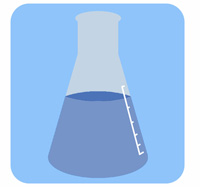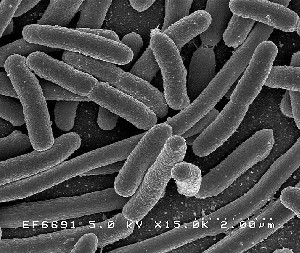 |
 |
Post Archive
October (1)
@DonorsChoose, a great cause for bringing science to our most needy students
Tuesday, October 4, 2011
February (1)
2010 (14)@DonorsChoose, a great cause for bringing science to our most needy students
Tuesday, October 4, 2011
November (3)
Summary of today's posts: The stuff of mentoring
Tuesday, November 9, 2010
Guest Post - XRayManCoUK: You never forget a good teacher
Tuesday, November 9, 2010
And the winner is...
Monday, November 1, 2010
October (2)
The Press Releases: An ongoing dilemma
Friday, October 22, 2010
A little competition never hurt anyone, right?
Wednesday, October 13, 2010
September (2)
But I don't wanna make an account to post in the forum: Creating a community
Tuesday, September 7, 2010
THE FaceBook for science is dead: What's next?
Friday, September 3, 2010
August (4)
It's Contest Time in September
Wednesday, August 25, 2010
Get Your LabSpaces Junk
Saturday, August 7, 2010
Ed Yong, "So what's the deal with the Press Releases, Brian?"
Thursday, August 5, 2010
Living LabSpaces, for real
Tuesday, August 3, 2010
July (2)
Guest Post by Jason Tetro: Why don’t we ever get 100% kill?
Monday, July 26, 2010
Points System is Now Active
Wednesday, July 7, 2010
June (1)
2008 (9)Summary of today's posts: The stuff of mentoring
Tuesday, November 9, 2010
Guest Post - XRayManCoUK: You never forget a good teacher
Tuesday, November 9, 2010
And the winner is...
Monday, November 1, 2010
The Press Releases: An ongoing dilemma
Friday, October 22, 2010
A little competition never hurt anyone, right?
Wednesday, October 13, 2010
But I don't wanna make an account to post in the forum: Creating a community
Tuesday, September 7, 2010
THE FaceBook for science is dead: What's next?
Friday, September 3, 2010
It's Contest Time in September
Wednesday, August 25, 2010
Get Your LabSpaces Junk
Saturday, August 7, 2010
Ed Yong, "So what's the deal with the Press Releases, Brian?"
Thursday, August 5, 2010
Living LabSpaces, for real
Tuesday, August 3, 2010
Guest Post by Jason Tetro: Why don’t we ever get 100% kill?
Monday, July 26, 2010
Points System is Now Active
Wednesday, July 7, 2010
October (3)
Results of the press release
Tuesday, October 28, 2008
Press Release Links
Thursday, October 16, 2008
The big announcement!
Monday, October 13, 2008
September (1)June (1)May (1)April (3)
PR web wrap up
Monday, April 21, 2008
Middle of the PRweb Press Release Week
Wednesday, April 16, 2008
Day 1 of the PRweb news Release
Wednesday, April 16, 2008
Results of the press release
Tuesday, October 28, 2008
Press Release Links
Thursday, October 16, 2008
The big announcement!
Monday, October 13, 2008
PR web wrap up
Monday, April 21, 2008
Middle of the PRweb Press Release Week
Wednesday, April 16, 2008
Day 1 of the PRweb news Release
Wednesday, April 16, 2008
 |
 |
Rate This Post
Total votes: 3
 |
 |
Blogger Profile
LabSpaces.net
LabSpaces.net
This is the LabSpaces site blog. You will find news and site updates here or posts on press or other coverage of the LabSpaces community
My posts are presented as opinion and commentary and do not represent the views of LabSpaces Productions, LLC, my employer, or my educational institution.
Please wait while my tweets load 
 |
 |
Awesome Stuff
 |
 |
Around the Network
Author: Brian Krueger, PhD | Comments: 9
Author: Brian Krueger, PhD | Comments: 0
Author: Brian Krueger, PhD | Comments: 2
Author: Brian Krueger, PhD | Comments: 2
Monday, July 26, 2010
Over the last year, there has been a question on the minds of thousands of people that continues to be for the most part unanswered: Why do disinfectants and hand sanitizers kill only 99.9% of germs and not the full 100%? Or, more succinctly, why is there always 0.1% survival? Many people have surmised that the 0.1% is due to the presence of those superbugs we keep hearing about. Others have suggested that the 0.1% is just not killable. Then there’s the suggestion that the 0.1% is just a way to keep the fear of germs in the mind of the public. While these may seem like good explanations, none of them are true.
As a microbiologist who has been involved in the testing of antimicrobial products, I’ve been testing disinfectants, hand soaps and hand sanitizers for years and I can tell you that both 99.9% and the resultant 0.1% is nothing more than a statistical anomaly.
When we do testing of these products, together known as antimicrobials, the goal isn’t to determine whether 100% is killed. We want to develop a statistical analysis to show that on a regular basis, the product will kill a certain amount of microbes. We accomplish this by using a certain amount of a particular bacterium, virus or fungi (what we call a challenge) that could never be 100% killed. For bacteria and fungi, that number is around 10-100 million; for viruses, it’s about 100,000. We use this amount to be sure that at the end of the test, there will be some survivors. When we do our statistical calculations, we report a reduction of the bug as either a log base 10 reduction or as a percent reduction.
For example, if we test a disinfectant against Staphylococcus aureus, we would use 100 million colony forming units (CFU) or, as we like to call it, 8 log10. After the testing, we might see around 100,000 survivors or a 5 log10 survival. This translates into a 3 log10 reduction or, as a percentage, 99.9%. The other 0.1% survived not because the germs are more resistant or tougher, but simply because the challenge was greater than the ability of the disinfectant.
The company receives a report on the activity against the challenge in both log10 and percent reduction and the report is submitted to a governmental regulatory agency, such as Health Canada or the EPA for a claim, which is a statement that can be used in the public to demonstrate the effectiveness of the product. This number is then used in advertising campaigns and other promotional items as a way of convincing the consumer to purchase their product.
In many cases, the reduction of bacteria can be as high as 99.9999% and the reduction of viruses may be 99.99%. However, each bug survives differently. In the cases of healthcare products, each challenge is listed with the accompanying reduction in percent. For the public, however, a common number that is easily remembered and repeated is used; in this case, 99.9%.
In light of this explanation, how can a consumer use that 99.9% in everyday use? The fact is that normal bacterial environmental contamination of surfaces and hands is on the range of about 1,000 CFU. Thus, 99.9% would mean that about 1 bacterium might survive on the surface after using the disinfectant or hand sanitizer. The number of viruses is significantly lower and 99.9% reduction would kill everything present. This means that in a healthy household with no illness, 99.9% is more than enough to keep the bugs at bay. But if a person gets sick, the contamination of the environment and hands may increase dramatically and the use of these products must increase to keep the levels low enough for activity.
There is one confounding factor to the 99.9% story. In the lab, before we do the testing, the surfaces are cleaned and sterilized while hands are washed thoroughly and sanitized with a special laboratory ethanol solution that removes any hint of microbes. It’s a part of the process and has been since its inception. In the real world on the other hand, this kind of ‘clean’ is almost never the case and with increased soiling of surfaces or hands, the 99.9% activity drops, sometimes radically. This means that the best way to ensure 99.9% is to keep surfaces and hands as clean as possible before using a disinfectant or hand sanitizer. Which is why I continue to promote good environmental cleaning and of course regular handwashing. It’s the best way to stay healthy and to avoid unnecessary illness.
###
You can visit Jason at his blog (http://germguy.wordpress.com/)
Over the last year, there has been a question on the minds of thousands of people that continues to be for the most part unanswered: Why do disinfectants and hand sanitizers kill only 99.9% of germs and not the full 100%? Or, more succinctly, why is there always 0.1% survival? Many people have surmised that the 0.1% is due to the presence of those superbugs we keep hearing about. Others have suggested that the 0.1% is just not killable. Then there’s the suggestion that the 0.1% is just a way to keep the fear of germs in the mind of the public. While these may seem like good explanations, none of them are true.
As a microbiologist who has been involved in the testing of antimicrobial products, I’ve been testing disinfectants, hand soaps and hand sanitizers for years and I can tell you that both 99.9% and the resultant 0.1% is nothing more than a statistical anomaly.
When we do testing of these products, together known as antimicrobials, the goal isn’t to determine whether 100% is killed. We want to develop a statistical analysis to show that on a regular basis, the product will kill a certain amount of microbes. We accomplish this by using a certain amount of a particular bacterium, virus or fungi (what we call a challenge) that could never be 100% killed. For bacteria and fungi, that number is around 10-100 million; for viruses, it’s about 100,000. We use this amount to be sure that at the end of the test, there will be some survivors. When we do our statistical calculations, we report a reduction of the bug as either a log base 10 reduction or as a percent reduction.
For example, if we test a disinfectant against Staphylococcus aureus, we would use 100 million colony forming units (CFU) or, as we like to call it, 8 log10. After the testing, we might see around 100,000 survivors or a 5 log10 survival. This translates into a 3 log10 reduction or, as a percentage, 99.9%. The other 0.1% survived not because the germs are more resistant or tougher, but simply because the challenge was greater than the ability of the disinfectant.
The company receives a report on the activity against the challenge in both log10 and percent reduction and the report is submitted to a governmental regulatory agency, such as Health Canada or the EPA for a claim, which is a statement that can be used in the public to demonstrate the effectiveness of the product. This number is then used in advertising campaigns and other promotional items as a way of convincing the consumer to purchase their product.
In many cases, the reduction of bacteria can be as high as 99.9999% and the reduction of viruses may be 99.99%. However, each bug survives differently. In the cases of healthcare products, each challenge is listed with the accompanying reduction in percent. For the public, however, a common number that is easily remembered and repeated is used; in this case, 99.9%.
In light of this explanation, how can a consumer use that 99.9% in everyday use? The fact is that normal bacterial environmental contamination of surfaces and hands is on the range of about 1,000 CFU. Thus, 99.9% would mean that about 1 bacterium might survive on the surface after using the disinfectant or hand sanitizer. The number of viruses is significantly lower and 99.9% reduction would kill everything present. This means that in a healthy household with no illness, 99.9% is more than enough to keep the bugs at bay. But if a person gets sick, the contamination of the environment and hands may increase dramatically and the use of these products must increase to keep the levels low enough for activity.
There is one confounding factor to the 99.9% story. In the lab, before we do the testing, the surfaces are cleaned and sterilized while hands are washed thoroughly and sanitized with a special laboratory ethanol solution that removes any hint of microbes. It’s a part of the process and has been since its inception. In the real world on the other hand, this kind of ‘clean’ is almost never the case and with increased soiling of surfaces or hands, the 99.9% activity drops, sometimes radically. This means that the best way to ensure 99.9% is to keep surfaces and hands as clean as possible before using a disinfectant or hand sanitizer. Which is why I continue to promote good environmental cleaning and of course regular handwashing. It’s the best way to stay healthy and to avoid unnecessary illness.
###
You can visit Jason at his blog (http://germguy.wordpress.com/)
This post has been viewed: 2409 time(s)
 |
 |
Add Comment?
 |
 |
Friends







no link . . .Read More
Link to anonymous blog . . .Read More
Link to facebook account . . .Read More
I wonder how long it’s been since you graduated, Brian. You’ve heard of Stockholm Syndrome, no? When you say things like: I have the utmost of respect for my mentor. My scientific. . .Read More
That's not the only thing you can do with it: http://blog.pascallisch.net/?p=223 . . .Read More